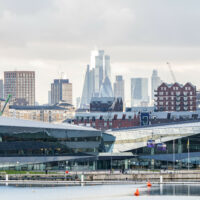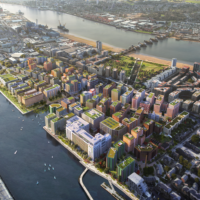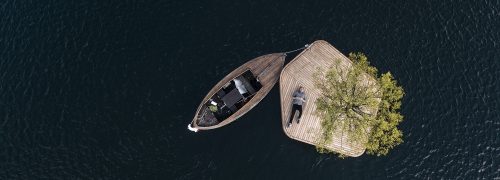
Regeneration news
We’re creating a waterside destination: here’s inspiration from around the world
As we activate the Royal Docks’ amazing waters, we take a look around the world at other great waterside developments.
The Royal Docks’ 250 acres of water are our most spectacular asset. This is the backdrop to our lives, whether at home or work, or out and about enjoying a meal, a nice swim, canoeing or wakeboarding. And we want to make the Royal Docks a waterside destination not just for all of London but also the world.
Inspiration starts, of course, right here in the Royal Docks. Conversations with local people are always at the heart of our work, and suggestions for enhancing the water have flooded in: from waterside walks that go all the way around the docks, to animating the surface with water sports, boats and floating cafes.
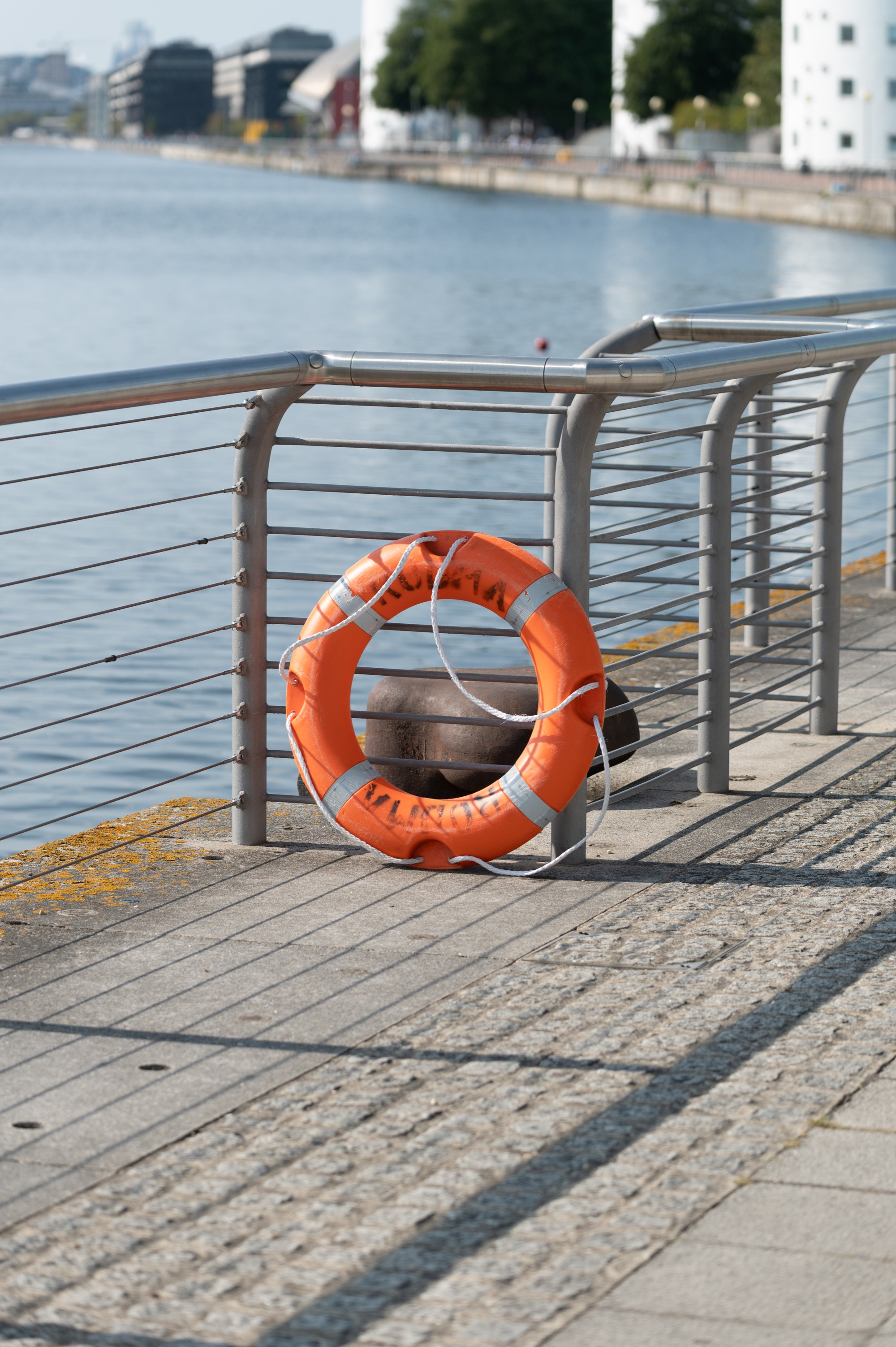
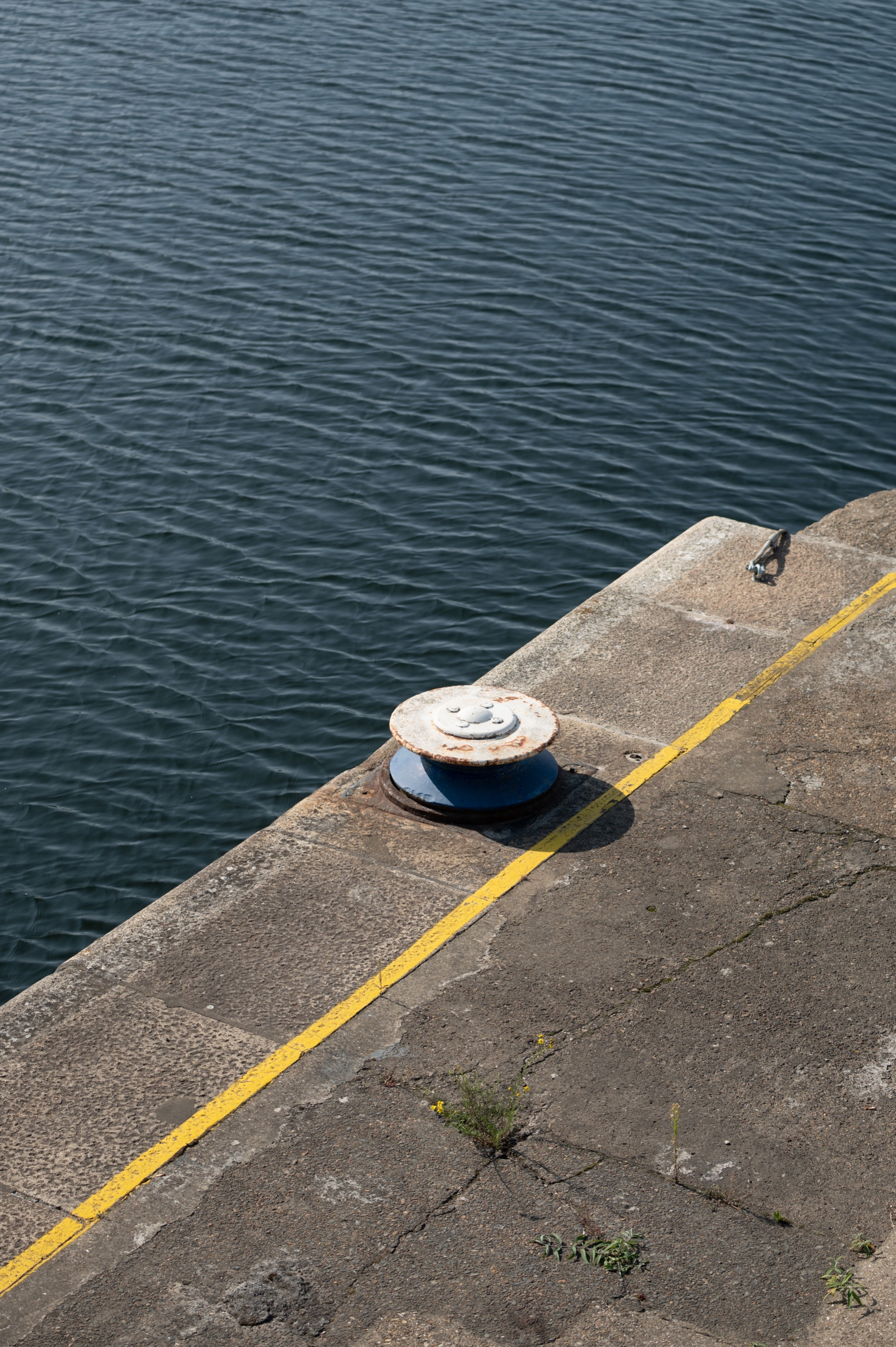
The Royal Docks
Our 250 acres of water are the area’s most spectacular asset. Photos by Tian Khee Siong
But we’re also drawing ideas from all over the world, and we welcome the challenge of matching some excellent waterside regeneration projects. Here are some favourites that we hope will soon be able to count the Royal Docks as their peers.
Step off the shore and out on the water
Copenhagen Islands
The Danish capital of Copenhagen is working on transforming its harbour from an industrial port to the cultural and social centre of the city – sound familiar?
This has resulted in several incredible projects, such as the Copenhagen Harbour Bath, a pool incorporated into the dockside for a safe and family-friendly place to swim, and Copenhagen Islands. This is a cluster of floating landforms just off the harbour, described by the designers as a ‘parkipelago’, will provide opportunities for eating and drinking, swimming, gardening, fishing and even mussel farming – all accessible by your own personal boat to row out into the water.
The idea is to “give back a little bit of space for whimsy and wonder to the old industrial harbor sides”.
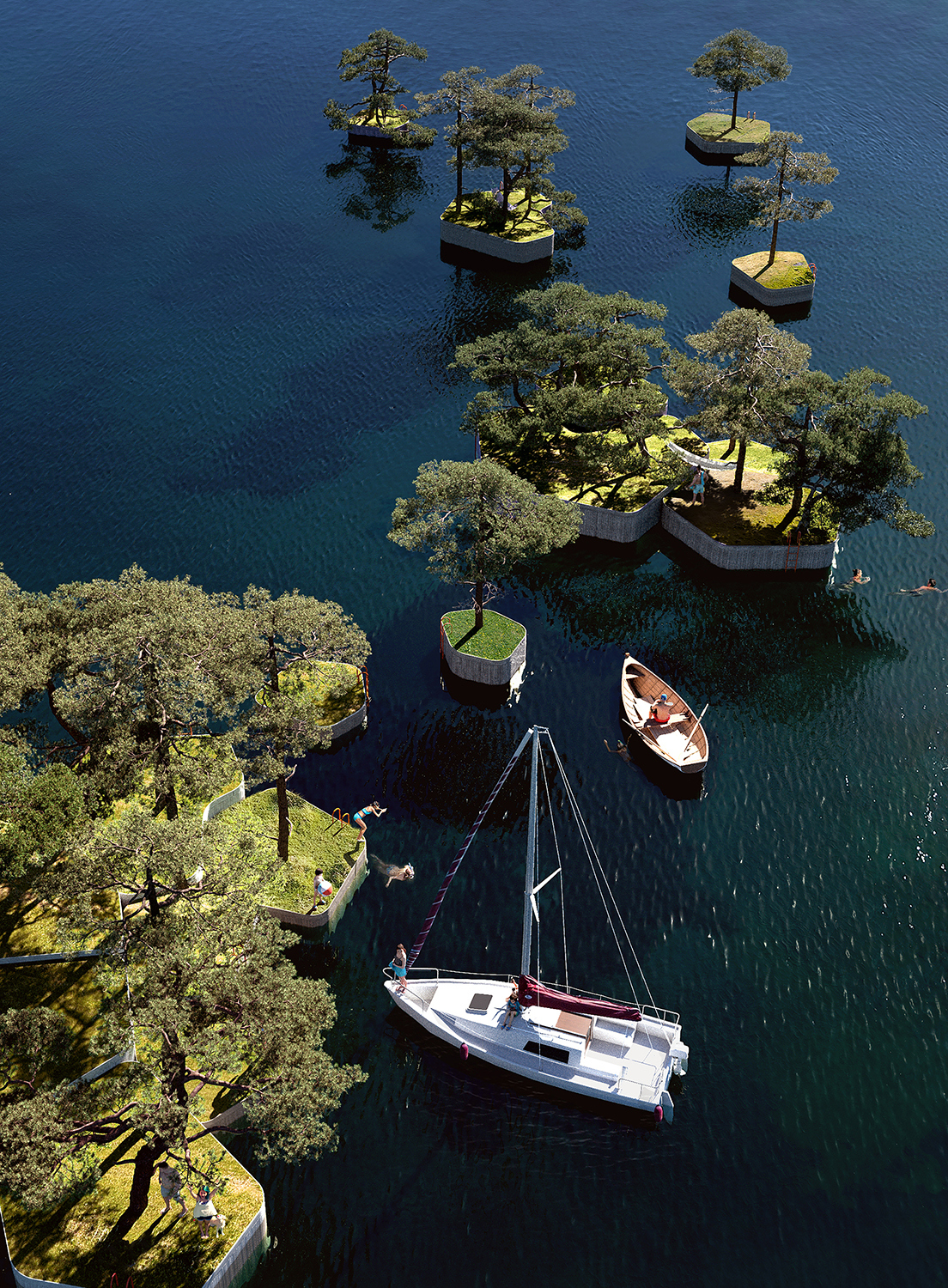

Copenhagen Islands
Images here and at the top courtesy of Marshall Blecher & Magnus Maarbjerg from Maritime Architecture Studio.
Little Island, New York
132 concrete columns in the Hudson River support the incredible Little Island, New York’s newest park and performance venue. It’s been described both as having “the feeling of actually leaving Manhattan behind” as well as being an “utterly New York-y place”. In any case, everyone seems to love this out-in-the-open secret garden.
Inspired by the city’s old piers where the pillars provide a breeding ground for fish, Little Island is designed to withstand any river conditions, and evergreens have been strategically planted to protect people from wind. The on-site amphitheatre can seat 700, meaning this has the potential to become a New York institution.

Little Island
New York’s not-so-secret garden can seat 700 as well as providing a habitat for fish. Photo by Michael Grimm
Making derelict waterfront industry work for modern life
Barcelona’s waterfront
Water redevelopment projects need to balance the needs of the locals who already live there with features that will attract newcomers and tourists. This challenge was at the heart of Barcelona’s strategy for its waterfront.
The Spanish city had two giant waterfront projects to tackle: it needed to transform the site of the 1992 Olympics into something of long-term value, and also find a way to transform its historical port area into an asset for the city. Just one example is how the Platja de la Barceloneta doesn’t just have bars, restaurants and DJ sets, but this seafront is now covered in wooden walkways, palms and designer showers, actually making these beaches a part of Barcelona's nightlife.
In addition to transforming the Barcelona waters into an attractive place for leisure, the new waterfronts have also become a startup hub – all while preserving its historical identity.
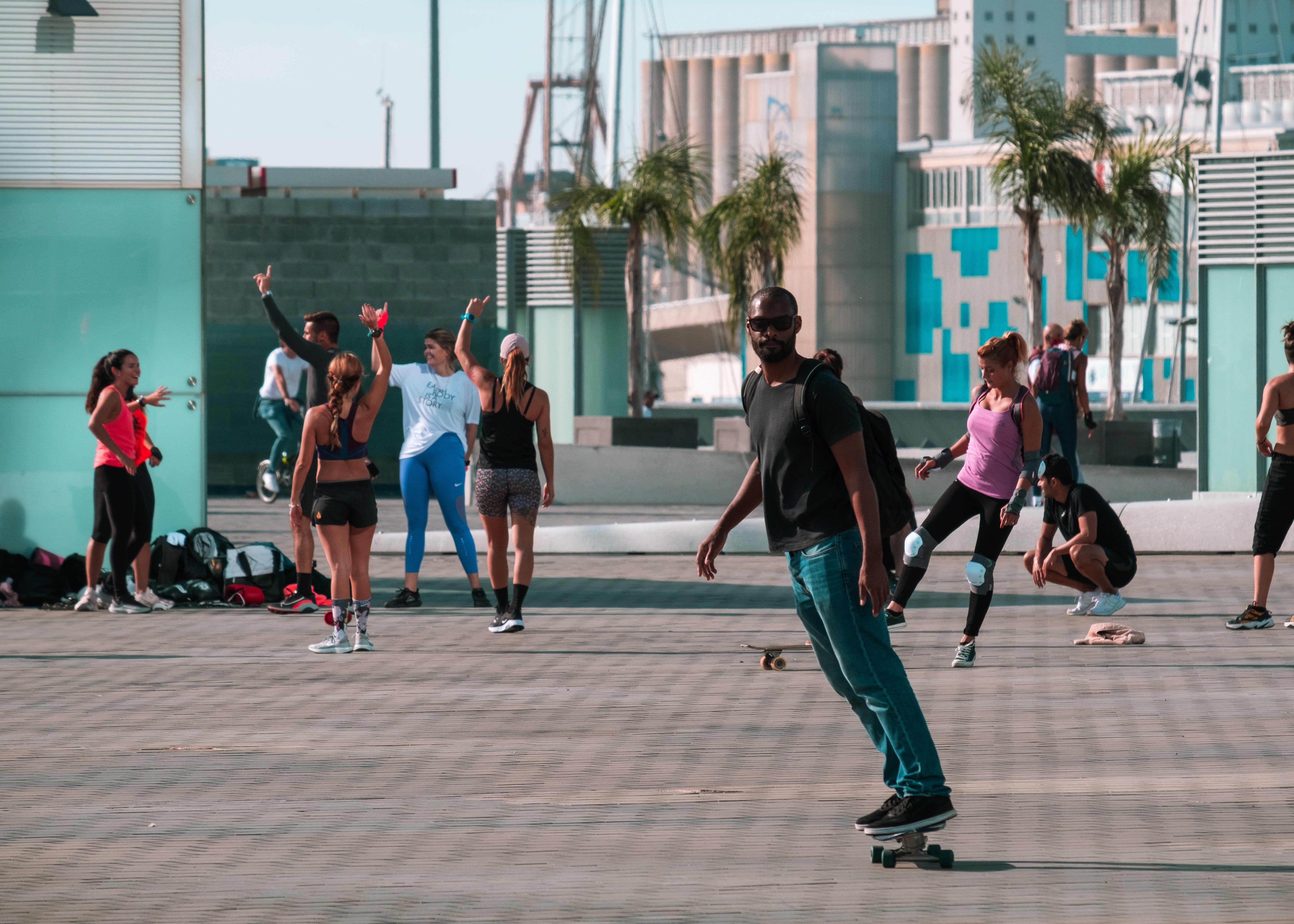
Platja de la Barceloneta
The city had to transform the site of its 1992 Olympics into something of long-term value. Photo by Andrei Barbu
Buffalo
The redevelopment of Buffalo Canalside in upstate New York is a showcase in how to transform a derelict industrial waterway into a nautical playground. Large industrial buildings that no one knew what to do with have been put to use. The old silos have become Silo City, where visitors flock to see ageing industrial artefacts, and enjoy climbing walls, flea markets and light shows that project on the blank grey walls.
Buffalo Waterfront has summer festivals, events for kids, history tours and ice skating in the winter. But the investments into the site also made it a magnet for business and economic activity, and the whole development means Canalside has become a waterfront for the entire city of Buffalo – not something people living there really felt they had before.
Buffalo Canalside is a showcase in how to transform a derelict industrial waterway into a nautical playground.
Water that captures the imagination
Paris Plage
The Paris Plage is similar to what we’re already doing at Royal Victoria Dock, but bigger: the Paris Plage is the 3.5km long city beach that’s rolled out every summer along the river Seine. This is the City of Paris’ effort to reclaim the riverfront from motor traffic, and make it into an attraction for locals who might otherwise flee to the coast for the summer – not to mention creating something wonderful and free of charge for people who can’t afford to travel.
In addition to bringing in sand, grass, and palm trees to create a place for Parisians to sunbathe and swim (in dedicated areas; the Seine’s not that clean), there’s also space for kids to play, sports for everyone, and other entertainment. It’s a proper summer fete.
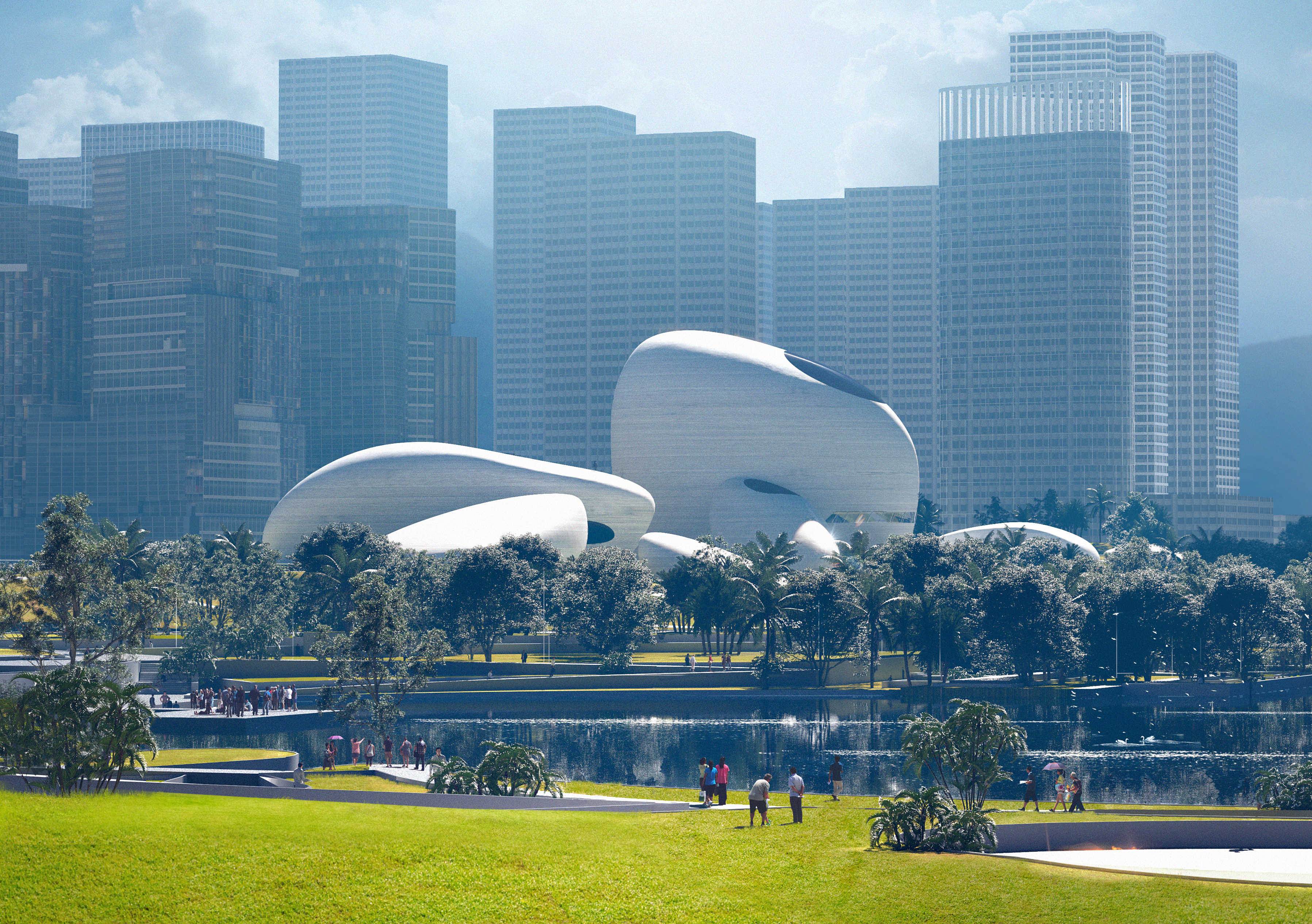
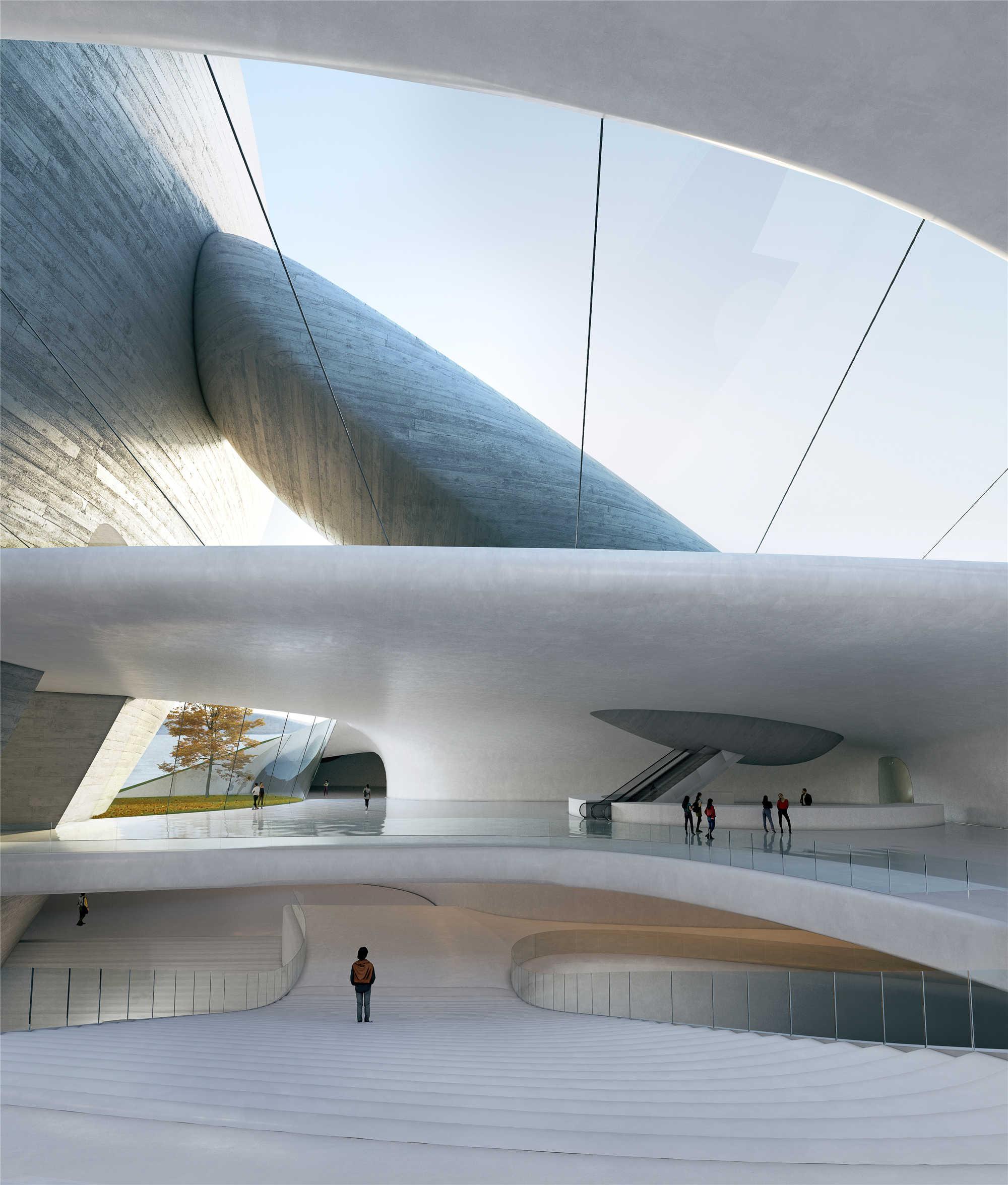
Shenzhen Bay Culture Park
The distinctive buildings in this futuristic-looking waterfront site resemble smooth stones. Photos courtesy of MAD Architects.
Shenzhen
The Chinese city of Shenzhen is full of great waterfront developments; the way the new opera house will connect with the water is something to see. Shenzhen Bay Culture Park is the city’s futuristic-looking waterfront site, where the designers are promising “a sense of weightlessness, and unrestrained imagination”. The park is dominated by distinctive buildings that look like smooth stones, which will house a museum, performance spaces and an amphitheatre seating 10,000, as well as ample space for walking and cycling around the large mirror pool at the centre of the site.
Shenzhen Bay Culture Park will be a dynamic civic space for international events and cultural exchange, as well as a lovely place for strolling up to the roof for spectacular views of the city and the water.
These are but a few projects which have us feeling inspired. Closer to home, we’re watching the Liverpool dockside redevelopment closely, as well as the Grand Union in North London, the large-scale works in Rotterdam, and many others.
The Royal Docks will be a waterside destination to rival some of the world’s best. What would you like to see by the water? Get in touch with your thoughts and ideas.
